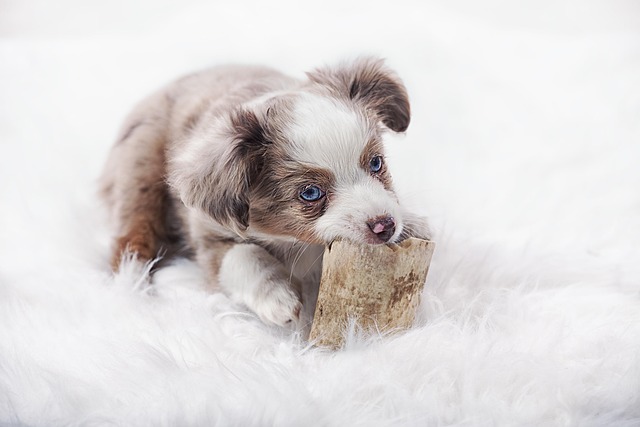
What is glaucoma in a dog?
You might notice your dog squinting more at mealtime or avoiding bright sunlight—these small changes could be early signs of a serious eye condition.
You’re excitedly planning playtime for your new Great Dane puppy, tossing a ball across the yard, when a friend mentions “hip dysplasia.” Suddenly, that carefree joy gives way to worry. This common orthopedic condition, affecting large and giant breeds like Labradors, German Shepherds, and yes, Great Danes, can turn a dog’s active life into a struggle. But here’s the good news: with the right approach, you can stack the odds in your pet’s favor. In the Europe and America region, where animal welfare laws emphasize responsible pet care, preventing hip dysplasia isn’t just a matter of keeping your dog comfortable—it’s part of being a conscientious pet owner.
Genetics play a major role in hip dysplasia. It’s a hereditary condition where the hip joint doesn’t develop properly, leading to arthritis, pain, and mobility issues down the line. A study by the Orthopedic Foundation for Animals (OFA) reveals that nearly 20% of Labrador Retrievers in the United States have some degree of hip dysplasia. When choosing a puppy, ask breeders for hip evaluations of the parents. Reputable breeders in countries like the UK and Canada will provide OFA or PennHIP certificates, which confirm that the breeding dogs’ hips are healthy. Skipping this step not only risks your dog’s well - being but also goes against ethical breeding practices promoted by local kennel clubs.

Nutrition is another crucial line of defense. Puppies, especially large breeds, grow rapidly, and an unbalanced diet can exacerbate hip problems. Avoid high - calorie, high - protein diets that cause too fast growth spurts. Instead, opt for food formulated for large - breed puppies, which typically contain controlled levels of calcium and phosphorus to support steady bone and joint development. In the European Union, pet food manufacturers must adhere to strict regulations regarding nutritional content, ensuring that products labeled for large breeds meet specific criteria. Some owners, like Sarah in California, have seen remarkable results by switching their Great Dane puppy to a slow - growth formula. “My vet warned me about the risks,” she says, “and the special diet seems to have made a real difference in his mobility.”
Weight management is equally vital. Every extra pound puts additional stress on a dog’s hips. A chubby Labrador might look cute, but that excess weight can accelerate the development of hip dysplasia. Regular weigh - ins at the vet, coupled with a balanced diet and appropriate exercise, are key. In Australia, where pet obesity rates are on the rise, many local councils offer free pet weight - management programs. Low - impact exercises, such as swimming or short, brisk walks on soft surfaces, are ideal for maintaining muscle tone without overloading the joints. Avoid activities like jumping from high places or strenuous running, especially during a puppy’s growth phase.
Supplements can also play a supportive role. Glucosamine and chondroitin, naturally occurring compounds in joint cartilage, help lubricate and strengthen the joints. Omega - 3 fatty acids, found in fish oil supplements, reduce inflammation. While supplements aren’t a magic bullet, they can complement a healthy diet and lifestyle. However, in the United States, the FDA regulates pet supplements, and it’s crucial to choose products from trusted brands. Always consult your vet before starting any supplement regimen, as incorrect dosages can have adverse effects.
Finally, early detection is key. Regular veterinary check - ups, including X - rays as your dog grows, can catch signs of hip dysplasia before symptoms become severe. In many Europe and America countries, pet insurance companies offer discounted rates for dogs with regular wellness exams, incentivizing proactive care. If your vet suspects hip dysplasia, they may recommend physical therapy, medication, or in severe cases, surgery. By staying vigilant and taking preventive measures, you can give your dog the best chance at a long, pain - free life—fulfilling both your pet - parent responsibilities and the legal requirements of caring for an animal in your community.

You might notice your dog squinting more at mealtime or avoiding bright sunlight—these small changes could be early signs of a serious eye condition.

Let’s set the scene: It’s a sweltering Phoenix afternoon—105°F outside—and you rushed your 2-year-old Lab mix, Cooper, on a quick walk to “get it over with.”

Let’s get real: You’re in your Miami apartment, watching your 3-year-old Corgi, Loki, struggle to climb the stairs to your second-floor unit.

Many dog owners brush off occasional scratching as just “dog behavior,” but persistent itching often signals something more—like a food allergy.

You might first notice your dog scratching more than usual—chewing at their paws until the fur looks thin, or rubbing their face against the couch nonstop.

Let’s be real: You’re standing in your Chicago apartment, watching your 3-year-old Beagle, Max, huff and puff just to climb onto the couch.